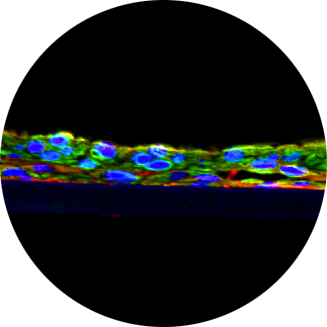Qualification of a non-animal vaginal irritation method admitted as nonclinical assessment model (NAM) in the Incubator Phase of the United States Food and Drug Administration (US FDA) Medical Devices Development Tool (MDDT)
- TR Number: 1032
- Authors: G.-E. Costin, E. Hill, J. Brown, A.J. Clippinger
- Materials Tested: personal lubricants, vaginal moisturizers
- Link to PDF: https://pubmed.ncbi.nlm.nih.gov/31626901/
The U.S. Food and Drug Administration (FDA) Center for Devices and Radiological Health (CDRH) classifies personal lubricants as Class II medical devices. Because of this status and the nature of body contact common to personal lubricants, CDRH reviewers routinely recommend a standard biocompatibility testing battery that includes: an in vivo rabbit vaginal irritation (RVI) test; an in vivo skin sensitization test, such as the guinea pig maximization test (GPMT); and an in vivo acute systemic toxicity test using mice or rabbits. These tests are conducted using live animals, despite the availability of in vitro and other non-animal test methods that may be suitable replacements. The only test included in the biocompatibility battery currently conducted using in vitro assay(s) is cytotoxicity. FDA’s recently launched Predictive Toxicology Roadmap calls for the optimization of non-animal methods for the safety evaluation of drugs, consumer products and medical devices. In line with these goals, a Consortium comprising the Institute for In Vitro Sciences, Inc. (IIVS), industry, the Consumer Healthcare Products Association (CHPA), and the PETA International Science Consortium (PETA-ISC) is qualifying the use of an in vitro testing method as replacement for the RVI test. Participating companies include manufacturers of personal lubricants and those interested in the advancement of non-animal approaches working collaboratively with the FDA CDRH to develop an in vitro testing approach that could be used in place of the RVI in pre market submissions. Personal lubricants and vaginal moisturizers with diverse chemical and physical properties (e.g., formulation, viscosity, pH, and osmolality) in their final undiluted form will be the focus of the program. In vitro vaginal irritation data generated using commercially available human reconstructed vaginal tissue model(s) will be paired with existing in vivo RVI data and analyzed to develop a Prediction Model for the safety assessment of these products. This research plan has been accepted into the FDA CDRH Medical Device Development Tools (MDDT) program as a potential non-clinical assessment model (NAM). The proposed NAM aligns with the goals of the recently launched FDA Roadmap to integrate predictive toxicology methods into safety and risk assessment with the potential to replace or reduce the use of animal testing.

